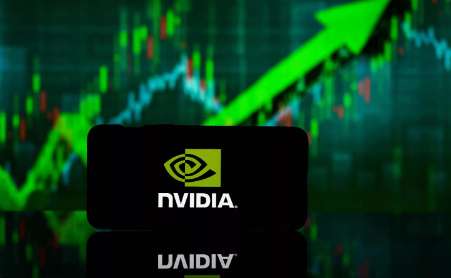DLocal's Q1 2025 Results: Navigating Emerging Markets Growth Amid Global Uncertainty

DLocal Limited (NASDAQ: DLO), a payments platform specializing in connecting global merchants with consumers in emerging markets, is poised to report its first-quarter 2025 financial results on May 14, 2025. As investors await the earnings release and accompanying conference call, the quarter will serve as a critical test of the company’s ability to sustain momentum in a dynamic environment marked by currency volatility, regulatory shifts, and evolving competition.
Key Metrics to Watch
The upcoming report will focus on several key financial and operational indicators:
Earnings Per Share (EPS):
Analysts estimate an EPS of $0.12, up sharply from the $0.06 reported in Q1 2024. This reflects expectations of improved operational efficiency, though investors will scrutinize whether the increase is sustainable amid margin pressures.Revenue Growth:
Revenue is projected to reach $213.5 million, a modest 6.7% increase from the prior quarter. However, the company’s ability to grow revenue in high-inflation markets like Latin America and Africa—where currency devaluation impacts USD-denominated results—will be under the microscope.Total Payment Volume (TPV):
DLocal achieved $26 billion in TPV for 2024, a 45% year-over-year surge. Sustaining this pace in Q1 will be vital to maintaining investor confidence, as emerging markets face mixed macroeconomic conditions.Margin Performance:
The company’s adjusted EBITDA margin of 64% in 2024 was a bright spot, driven by cost discipline. However, take rate compression—a 15 basis point decline due to volume-driven pricing—could weigh on margins.
Strategic Strengths and Operational Momentum
DLocal’s “One dLocal” platform continues to be its core differentiator. By offering a unified API, settlement system, and contract model, the company simplifies cross-border transactions for global merchants, eliminating the need to manage multiple local processors or entities. This model has enabled:
- 20 new pay-in methods and 7 pay-out methods launched in 2024, expanding its ecosystem.
- 9 new global licenses, including a UK FCA authorization, enhancing regulatory compliance and market access.
- A 140% TPV retention rate, underscoring strong merchant loyalty.
The platform’s AI-driven tools, such as smart payment routing and tokenization, have also improved operational efficiency. For instance, customer support response times fell by 88% in 2024, while resolution times dropped by 45%, reducing friction for merchants and consumers alike.
Challenges and Risks
Despite these strengths, DLocal faces headwinds that could dampen results:
Currency Volatility:
Emerging market currencies, particularly in Latin America and Africa, have weakened against the U.S. dollar. This depreciation reduces revenue when converted to USD, as seen in Q4 2024 when the stock fell 26% after results missed expectations.Take Rate Compression:
Competitive pricing pressures in saturated markets have narrowed margins. DLocal must balance growth with profitability, a challenge highlighted in its SEC filings.Regulatory Complexity:
Securing licenses in diverse jurisdictions remains resource-intensive. While the company’s 2024 expansion was successful, further regulatory hurdles could slow its pace.Stock Price Volatility:
DLO Trend
Historical data shows earnings volatility: shares rose 12.8% after Q3 2024 results but fell 26% following Q2’s miss. Investors will need to assess whether Q1’s results justify current valuations.
Institutional Sentiment and Portfolio Shifts
Institutional investors are split:
- Bullish bets: Firms like Azora Capital LP and Baillie Gifford increased holdings in Q4 2024, signaling confidence in long-term growth.
- Bearish moves: Morgan Stanley reduced its stake by 70%, citing macroeconomic risks.
This divergence underscores the dual narrative around DLocal: a high-potential disruptor in underpenetrated markets versus a company navigating execution risks in volatile regions.
Conclusion: A Crossroads for Emerging Markets Leadership
DLocal’s Q1 results will determine whether it can solidify its position as a leader in cross-border payments for emerging markets. Key takeaways from the report should include:
- TPV Growth Sustained: Maintaining the 45% TPV growth rate from 2024 would validate the “One dLocal” platform’s scalability.
- Margin Resilience: Counteracting take rate compression while preserving the 64% EBITDA margin will be critical to investor confidence.
- Currency Hedging Strategy: Disclosures around hedging mechanisms or geographic diversification could alleviate concerns about USD revenue volatility.
With a $2.1 billion market cap and a P/E ratio of 21.2x, DLocal is priced for success. Yet, execution risks remain. If the company can demonstrate operational leverage and TPV growth while mitigating currency impacts, it could outperform peers. Conversely, a miss on TPV or margin targets may reignite selling pressure, as seen in Q2 2024.
Investors should also watch for strategic updates during the conference call, including plans for new market entries (e.g., Africa), M&A opportunities, and AI-driven innovations to reduce transaction costs. The results will either reinforce DLocal’s narrative as a disruptor in a $3 trillion+ cross-border payments market or expose its vulnerabilities.
In the end, DLocal’s story hinges on its ability to convert market share gains into consistent profitability—a test of execution that will define its trajectory for years to come.










